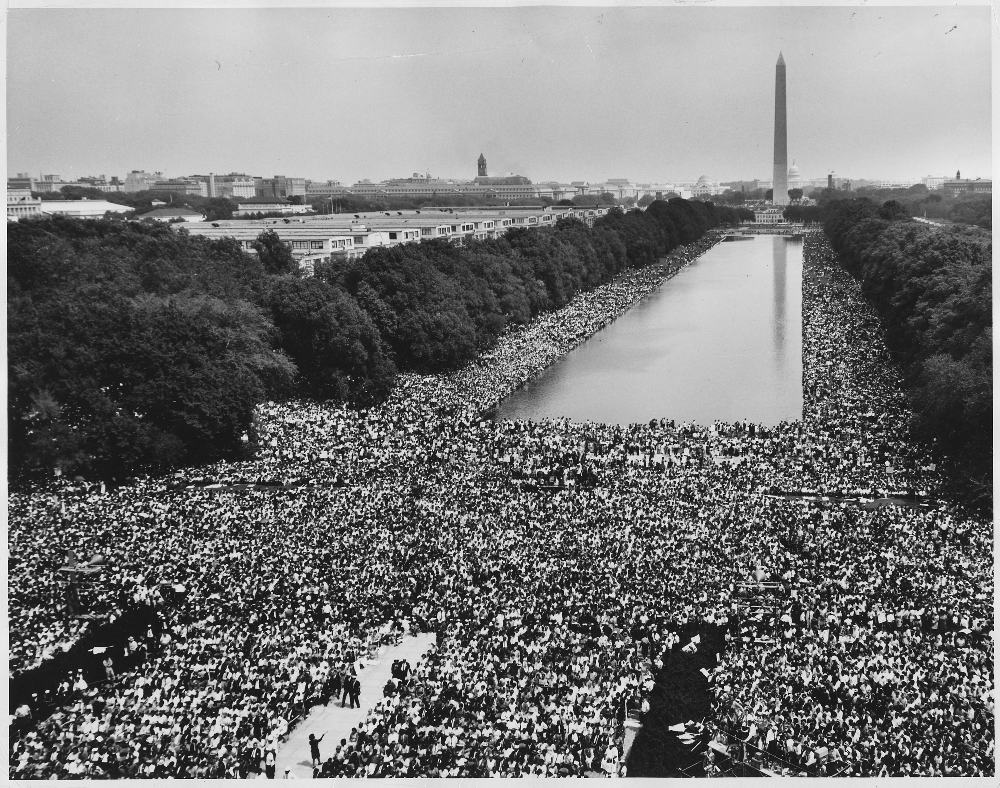March for Jobs and Freedom: Calculating the Crowd
Lesson by Louise Bock, Susan Guengerich, and Hope Martin
In this lesson, students use representations and computations to estimate the crowd at the 1963 March on Washington. Students will strengthen critical thinking and mathematical skills through investigation and problem solving, and gain a deeper understanding of the issues related to protest demonstrations and media representations of events.
Aerial view of the Washington Monument and marchers at the March on Washington for Jobs and Freedom, August 28, 1963. U.S. Information Agency, National Archives and Records Administration
Time Required: One class period
Grade Level: Upper Elementary+
The map shows the area where people gathered for the March on Washington for Jobs and Freedom in 1963. The total dimensions of the rectangle are 1,500 feet by 5,000 feet. However, in aerial photographs it appears that people were only standing in an area that was about 900 feet by 4,000 feet. It has been estimated that about 250,000 people were in this area listening to the speeches. Do you agree with this estimate?
OBJECTIVES
Students will develop and use strategies to estimate computations in situations relevant to students’ experience. Students will be able to judge the reasonableness of the estimated results.
Students will express mathematical relationships and understand geometric ideas such as side lengths, perimeters, and areas.
Students will use representations to model and interpret physical, social, and mathematical phenomena.
Students will strengthen critical thinking and mathematical skills through investigation and problem-solving.
Students will gain a deeper understanding of the issues related to protest demonstrations and media representations of events by generating questions, synthesizing data, and communicating ideas.
PROCEDURE
Mark off a 3-foot x 3-foot area, or greater if social distance protocols are appropriate.
Join with as many classmates as you can to fill the area comfortably. Be sure you would be comfortable standing and listening to speeches for a few hours.
How many students can comfortably stand in this area?
What is the area in square feet of the space occupied by the crowd in 1963?
If people can stand in a 3-foot x 3-foot square (9 square feet), then how many people could have comfortably listened to all of the speakers at the March on Washington?
Do you believe the estimate of people at the March was reasonable? Explain your answer.
Why is it important to accurately report crowd size at a march or demonstration?
Often organizers comment that the press (or in the case of demonstrations in Washington, D.C., the National Park Service) underreport and underestimate the crowd. Several presidential inaugurations and protests have argued for greater official numbers than have been recorded. Why would this happen?
© J. Weston Walch. Reprinted with permission from Louise Bock, Susan Guengerich, and Hope Martin; Multicultural Math Fun: Holidays Around the Year (Walch Education, 1997). Adaptations were made to the original.


